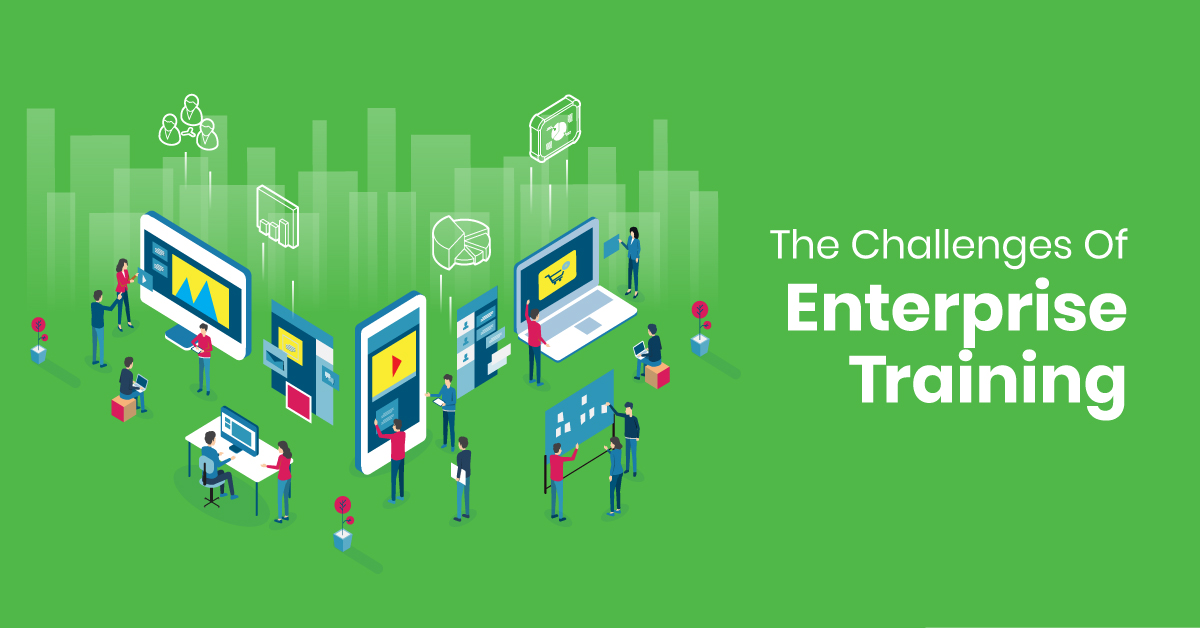But, as we’re about to uncover, training challenges in the workplace are often amplified when it comes to large enterprises. In fact, enterprise training poses a unique host of obstacles that leave many training managers stumped. Here are 5 big ones to look out for.
The top 5 enterprise training challenges
Employee training can be tough, but enterprise training can be tougher. The good news is that most enterprise training issues can be resolved with a few simple strategies.
Here are 5 of the most current issues in training and development in enterprises today, along with the strategies that will help resolve them.
1. Making training personal
Many multinational enterprises use scale and distance as an excuse for generic training programs. But adopting a one-size-fits-all approach often leaves a disconnect between learning expectations and their relevance to employees’ jobs and personal career paths.
When this happens, employees start to disengage from training, or even resist it. So, while understanding personal differences might seem like a hefty time investment, this is a crucial step in ensuring the success of your enterprise training program.
Consider the different intended audiences when designing your enterprise training courses. Then, develop your courses in line with their job priorities, career ambitions, and specific learning needs. For example, product development teams might benefit more from collaborative group training, while sales teams might prefer a more competitive learning approach.
For those who need more individualized training, enterprise eLearning is often the solution. Using a trusted learning management system (LMS) will give employees the option to create their own personalized profiles and learning paths. In addition, access to bite-sized chunks of content means that employees can find the information most relevant to their jobs and learning needs.
2. Explaining training costs to stakeholders
With a complex network of stakeholders, convincing decision-makers that training will result in a positive return on investment is one of the biggest enterprise training challenges – and for good reason! Failed enterprise training programs are wasteful because they cost time and resources without offering any business benefits.
But the outcomes of enterprise training can be hugely positive, too. And today, the metrics most highly considered in determining success are engagement, business metrics and the speed of onboarding new employees.
Help decision-makers see the potential of enterprise training. Present them with a solid, evidence-based strategy that links training outcomes to business benefits. Then, make an argument for the use of a strong LMS and eLearning content as important tools for the accessible delivery of enterprise training.
3. Accommodating a diverse and global workforce
Working in a multinational enterprise often means that your workforce is diverse. Not just culturally, but also generationally and linguistically. Of course, they’re probably dispersed across different cities or countries, too. Perhaps some teams even work remotely.
Finding an approach to training that caters to diverse and dispersed teams can feel like an overwhelming task. So, how do you not only meet the required global training targets, but also accommodate employee distance and differences, too? The most logical solution to this challenge is an enterprise training LMS.
With an enterprise LMS, all employees access a single tool and receive the same, standardized learning materials in their own first language. Or, they drive their own tailored learning experience by accessing the materials most relevant to them. With a variety of learning activities from written notes to videos and infographics, enterprise eLearning offers something for everyone.

4. Monitoring and reporting on training
Monitoring employee learning and development can be an administrative nightmare. Staying up-to-date with the various training ecosystems of such a large operation might seem impossible. At least, that’s how some stakeholders might feel if they haven’t yet been exposed to online learning.
When choosing an enterprise LMS, find a trusted service provider that offers automation, assessment and customized reporting capabilities. This makes administrative tasks simpler and more convenient, even on a large scale.
5. Future-proofing training
Sadly, enterprises are riddled with legacy systems and outdated content that no longer work efficiently. One of the biggest enterprise training challenges is replacing these old systems and outdated content on a mega scale. But with rapid technological advancements changing the way we do business, keeping a finger on the pulse has never been more important.
Most training programs revolve around current learning needs. But future-proofing content to stay ahead of the curve is equally important. The solution? Leverage learner feedback for continuous improvement. Over time, feed these changes into your course development cycle. This will ensure that your enterprise training course remains relevant.
No matter how diverse your enterprise workforce is, the chances are that they’ll enjoy games. So, find a high-quality LMS with gamification features and start making learning fun. Incorporating levels, leaderboards, and virtual rewards can help foster healthy competition among learners, not to mention increased engagement and motivation to complete training.
Defeating enterprise training challenges
Moving from traditional, small-scale training approaches to large-scale eLearning programs is a mean feat for any enterprise. But to remain competitive, you have to face these enterprise training challenges and overcome them.
As the saying goes, if you don’t change, you’ll stay the same. The problem is, your competition won’t. So, keep an eye out for these 5 enterprise training challenges and start implementing some of our solutions today.



